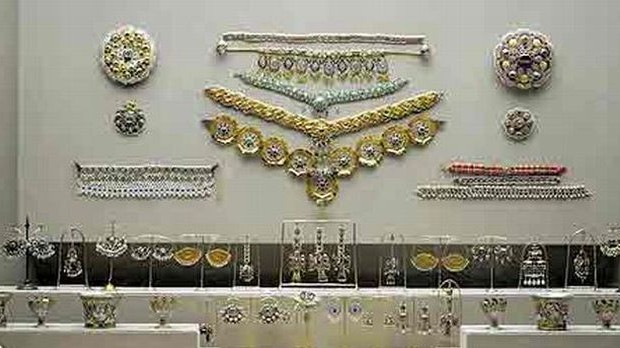The exhibits are displayed in chronological order stretching from the Umayyad era and to the end of the Ottoman Empire, and with every floor the visitors ascend, the detail and elegance of the artifacts increase.
Visitors often note that the gold jewelry on display is of the highest class, and how the embroidered images in the textiles collection are evidence of the mingling of different peoples under an Islamic state. The artifacts also signify how Muslim society was class oriented during the Abbasid era and the surgical instruments displayed also suggest a high level of professionalism and precision.
The exhibit that draws the most visitors is most likely the marble display from the Mamluk era, which occupies a large portion of the second floor. The refined carvings and magnificent inscriptions glimmer with color, which suggest that their relocation and restoration took much time and effort.
Museum Director Dr. Mina Murayto told Asharq Al-Awsat that the Benaki museum was unique. “This is the only museum [of its kind] in the Balkan region, and we are proud of that,” she said. “We have unique pieces found nowhere else. Visitors to the museum become one with the peoples of the East when they look upon the items which have come from Egypt, Syria, Iraq, Iran, Turkey and nearly all other countries that have lived under Islamic civilization. The economic crisis afflicting Greece has impacted the Benaki Museum, for we are not permitted to undertake all of the measures necessary for the museum’s upkeep. Currently we are undertaking new programs so that we may find some new sources of financial support and thus prevent the museum from closing.”
Archaeologist Fotini Gramtico told Asharq Al-Awsat, “The museum opened its doors in 2004 before Athens hosted the Olympic Games and work had been underway long before then. However due to some issues regarding the lower floor, work had to be postponed for some time. However, the museum still receives Greek and foreign visitors because we are located next to the Acropolis in central Athens. Many visitors come to learn about Islamic culture, and some visitors from Arab countries come to read what is written in the manuscripts. I cannot read Arabic, so I am glad when they come and teach me what is written.”
“The museum holds ancient Arabic manuscripts and ancient copies of the Quran, in addition to a variety of other important and unique artifacts,” he said. “All of this would not be if not for the founder of the museum, Antonis Benaki, who resided in Alexandria, Egypt a hundred years ago in one of the various Greek communities that thrived in Egypt at that time. He loved Islamic art and bought many of the items on display here.”
Visitors gaze upon Quranic verses written on papyrus paper and carved in gold that employ the Arabic characters of old, void of punctuation. Viewing them, one is struck by the difficulties early Muslims must have faced in their attempts to memorize the Holy Quran, and their struggle to improve the methods by which it was recorded.
The weapons on display also garner much attention. Their museum’s collection are ornate, ceremonial pieces, rather than functional military kit. This is especially true of the museum’s Ottoman daggers, covered in colorful inscriptions and magnificent decorations.
Olsavi Karnopoulo, a museum guide, told Asharq Al-Awsat: “In general, there is a growing interest in Muslim artifacts. Lately I have noticed that most of the visitors pay special attention to the items of the Ottoman era and to the various other items that cannot be found in any other museum. Tourists and visitors that come here are interested in Islamic culture. We also welcome groups of schoolchildren and tell them the simplified stories behind these pieces of Islamic art.”
The astrolabe (an early compass) is an artifact treasured by the museum and is on display on the second floor. The astrolabe is an instrument of remarkable precision and detail, and the one displayed here bears the name of its creator, Fourteenth Century Arab astronomer Ibn Sarraj. The astrolabe is capable of many things, including making calculations and using the stars to determine the exact date and time.
The faces that appear throughout the various pieces of art signify Islam’s global reach, with many faces bearing Arabic, Chinese, Turkish, and Persian features. Visitor’s also note the wide variety of clothing and uniforms on display that trace their origins back to countless peoples and tribes, all united in their faith and their artistic skill.


Fantastic museum fantastic work ! Congratulations !! Xxxx